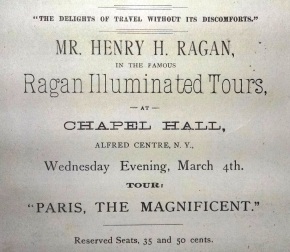
1885 program for the magic lantern show
“The delights of travel without its discomforts” — On a cold night in March, 1885 the students of Alfred University and the local community residents gathered in the auditorium in Alumni Hall (then called Chapel Hall) and were treated to a magic lantern show by Ragan Illuminated Tours. These shows were the 19th-century version of today’s PowerPoint presentations. Ragan lectured on “Paris, the Magnificent” while projecting images he had photographed. Paris – a place those in attendance would have been aware of but few could hope to ever visit themselves.
The University Archives has a collection of lantern slides that represent various scenes and people from Alfred. Presumably many of them were made 100 years ago as a January 18, 1916 Fiat

Lantern slide showing the Fiat Lux newspaper staff in the University library in Kenyon Hall
Lux headline suggests: “Lantern Slides of Alfred to be Made.” The article says they would be for exhibition purposes, chiefly to loan out to high schools, an early Admissions marketing campaign. The Archives also owns a lantern slide projector!
For more information on magic lantern shows, read a nice write up from Victoriana Magazine. An excerpt: “Imagine yourself back in the Victorian period, say in 1895, just before the birth of the movies. Suppose you wanted to go out for an impromptu evening’s entertainment. What would you do? The chances are you’d go to a magic-lantern show, a combination of projected images, live narration, and live music that the movies came from. They were incredibly popular 100 years ago. In 1895 there were between 30,000 and 60,000 lantern showmen in the United States, giving between 75,000 and 150,000 performances a year. What were these shows like? Most were the equivalent of our modern “Nova” or the “Discovery Channel” – illustrated lectures on subjects of popular interest like Travel, Science, and Art, using photographic lantern slides to create interest and excitement. In addition to this “moral entertainment” as the Victorians called it, there were shows that emphasized stories, songs, and comedy — the kind of shows that would soon lead to the movies.”
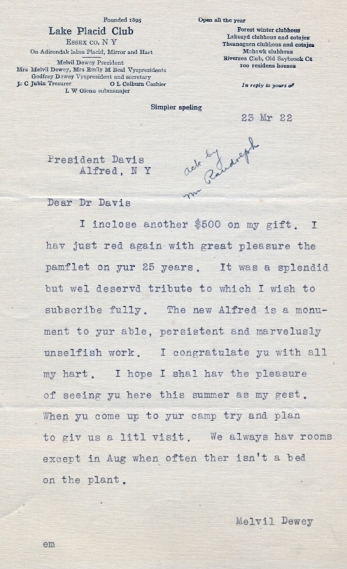

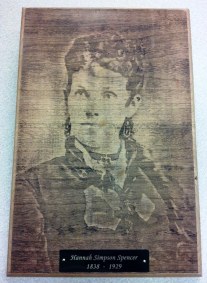
 As we near yet another end of the academic year, senior art students are busily preparing for their final public exhibitions. This showing of art is heavily attended and looked forward to by many as a “must attend” event. (This year it will be held Saturday, May 7th.)
As we near yet another end of the academic year, senior art students are busily preparing for their final public exhibitions. This showing of art is heavily attended and looked forward to by many as a “must attend” event. (This year it will be held Saturday, May 7th.)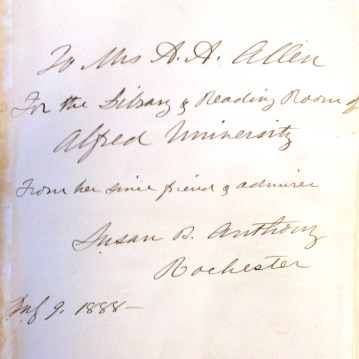




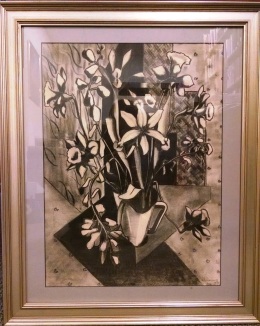 Arthur H. Crapsey, II was a ceramic design major at Alfred University, graduating in 1942. The University Archives recently received a framed charcoal drawing he completed in 1940. Arthur enjoyed creating original stage settings for the university’s performing arts theater productions, and acted in many of them as well. In addition to the drawing, the archive collection contains hundreds of slide images Arthur took of various AU productions after he graduated as well as some of his set designs. The Performing Arts Division today is the beneficiary of an endowed fund from him.
Arthur H. Crapsey, II was a ceramic design major at Alfred University, graduating in 1942. The University Archives recently received a framed charcoal drawing he completed in 1940. Arthur enjoyed creating original stage settings for the university’s performing arts theater productions, and acted in many of them as well. In addition to the drawing, the archive collection contains hundreds of slide images Arthur took of various AU productions after he graduated as well as some of his set designs. The Performing Arts Division today is the beneficiary of an endowed fund from him. After graduation, Arthur joined the Air Force, joining the 306th Bomb Group. During a raid on Germany on Dec. 22, 1943, his aircraft was hit and he was injured, eventually losing his right leg due to an infection. He was awarded a silver star “for conspicuous gallantry in action against the enemy.” After leaving the Air Force as a first lieutenant in 1944, Arthur became one of Kodak’s first industrial designers and had a major and lasting influence on the company’s products. In 1972, Arthur was inducted into the “Academy of Fellows” of the Industrial Design Society of America.
After graduation, Arthur joined the Air Force, joining the 306th Bomb Group. During a raid on Germany on Dec. 22, 1943, his aircraft was hit and he was injured, eventually losing his right leg due to an infection. He was awarded a silver star “for conspicuous gallantry in action against the enemy.” After leaving the Air Force as a first lieutenant in 1944, Arthur became one of Kodak’s first industrial designers and had a major and lasting influence on the company’s products. In 1972, Arthur was inducted into the “Academy of Fellows” of the Industrial Design Society of America. (Airlift photo courtesy of
(Airlift photo courtesy of 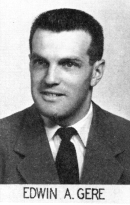 I began to think of all the children in Berlin and Christmas coming up,” said Gere. His solution: “I wrote to student friends back in Alfred, asking if they could organize a so-called Operation Santa Claus with Christmas packages for the Berlin children. Their response was overwhelming!” In the end, students assembled 110 packages of Christmas cheer for Berlin children. According to an article in the Alfred University Alumni News of the time, the “only comment from Saint Nick was ‘Mission accomplished successfully.’”
I began to think of all the children in Berlin and Christmas coming up,” said Gere. His solution: “I wrote to student friends back in Alfred, asking if they could organize a so-called Operation Santa Claus with Christmas packages for the Berlin children. Their response was overwhelming!” In the end, students assembled 110 packages of Christmas cheer for Berlin children. According to an article in the Alfred University Alumni News of the time, the “only comment from Saint Nick was ‘Mission accomplished successfully.’”
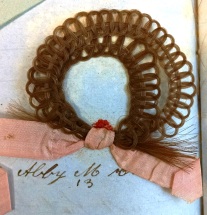
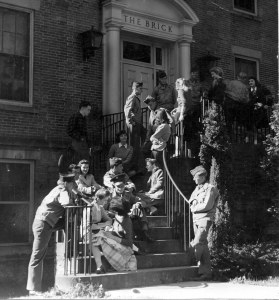 On November 11th we take a moment to thank our veterans for their dedicated service to our country. This photo shows members of the Army Specialized Training Program chatting with some of the women students in the fall, 1943. The military program used The Brick for its barracks in both World War I and World War II. In the second war, there were 711 enlisted men on campus from July 1943 – April 1944.
On November 11th we take a moment to thank our veterans for their dedicated service to our country. This photo shows members of the Army Specialized Training Program chatting with some of the women students in the fall, 1943. The military program used The Brick for its barracks in both World War I and World War II. In the second war, there were 711 enlisted men on campus from July 1943 – April 1944.